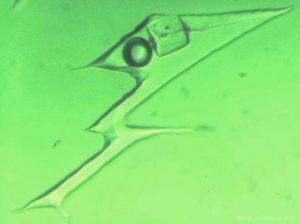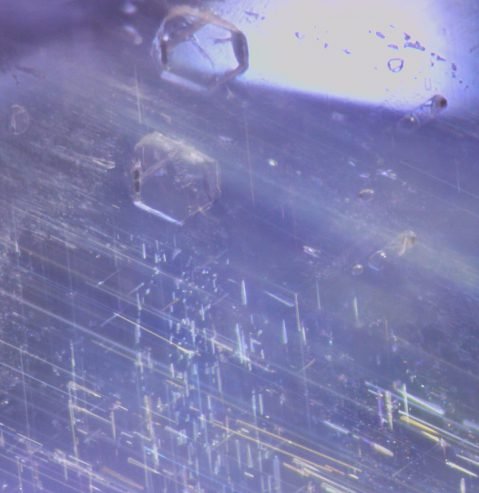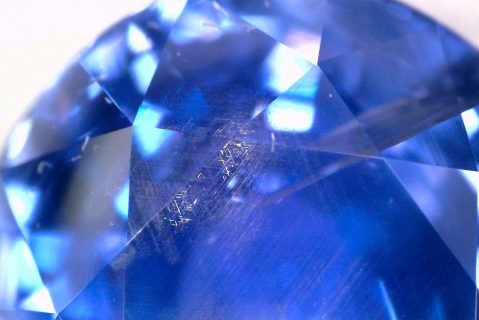How to Authenticate Antique Gemstones: Insider Tips from Gemmologists
Introduction
In the world of jewellery, antique gemstones hold a unique allure, embodying history, craftsmanship, and beauty. However, ensuring the authenticity of these treasures is paramount for collectors and enthusiasts alike. In this comprehensive guide, we'll delve into the art of authenticating antique gemstones, offering valuable insights and expert tips from seasoned gemologists.
Understanding Antique Gemstones
Antique gemstones refer to precious or semi-precious stones that are at least a century old. These gems carry with them a rich history and often boast unique characteristics and craftsmanship reflective of their era. Understanding the nuances of antique gemstones is essential for distinguishing them from modern counterparts and imitations.
Common Authentication Techniques
Machine checking gemstones using infrared spectroscopy, diamonds clarity, Botswana, Image courtesy of dreamstime
Gemmologists employ various techniques to authenticate antique gemstones, including visual inspection, chemical testing, and spectroscopy. Visual examination involves scrutinizing the gemstone for distinctive features such as cut, colour, clarity, and carat weight. Chemical testing helps identify specific gemstone compositions, while spectroscopy provides insights into their molecular structure.
Identifying Gemstone Types
Identifying gemstone types is a fundamental aspect of authenticating antique gemstones. Gemstones encompass a diverse array of minerals, each with its own unique characteristics and properties. Among the most common gemstones found in antique jewellery are diamonds, rubies, sapphires, emeralds, and pearls, to name a few.
Examination under a Microscope: Unlocking the Secrets of Antique Gemstones
Master in head-mounted lens inspects aquamarine crystal on whie background, image courtesy of Dreamstime
Examination under a microscope unveils a hidden world of intricacies and revelations within antique gemstones. This meticulous process serves as a cornerstone in the authentication journey, offering gemmologists invaluable insights into the gemstone's history, composition, and authenticity.
Identifying Telltale Signs: Examination under a microscope allows gemmologists to discern subtle clues and indicators of a gemstone's origin and authenticity. Natural inclusions, growth patterns, and internal fractures provide valuable insights into the gemstone's formation process and journey through time. These telltale signs serve as fingerprints, helping distinguish genuine antique gemstones from synthetic or treated imitations.
Analyzing Gemstone Inclusions
Inclusions, or internal imperfections, are natural features present in many gemstones. They serve as unique identifiers, akin to a gemstone's fingerprint. Gemmologists analyse the type, size, and distribution of inclusions to determine a gemstone's authenticity and origin. Certain inclusions, such as gas bubbles or mineral crystals, can provide clues about the gemstone's geological history.
Picture 1: A crystal inclusion (probably chromite) in an emerald. Picture 2: A three-phase emerald inclusion.
Images courtesy of Emeralds.com
Characteristics of Emeralds: Unlike modern treatments that may enhance colour or clarity, antique emeralds often exhibit natural characteristics such as inclusions, known as "gardens," which add to their charm and authenticity. These inclusions, along with their characteristic fluorescence under ultraviolet light, serve as unique identifiers, distinguishing genuine antique emeralds from synthetic or treated counterparts.
Characteristics of Sapphires: Antique sapphires, part of the corundum mineral family, boast stunning blue hues, varying from deep royal tones to tranquil cornflower shades. Unlike contemporary enhancements that might alter their colour or clarity, antique sapphires frequently showcase natural inclusions, further enhancing their allure and authenticity. These inherent imperfections, coupled with their remarkable hardness and brilliance, serve as distinctive markers, setting genuine antique sapphires apart from synthetic or treated alternatives.
Various inclusions in Sapphires, Images courtesy of the Natural Sapphire Company
Inclusions in Diamonds: Typical inclusions found in antique diamonds serve as natural fingerprints, revealing insights into their formation and journey through time. These inclusions, often visible under magnification, include pinpoint inclusions, feathers, clouds, crystals, and cleavage planes. Pinpoint inclusions are tiny mineral crystals or gas bubbles trapped within the diamond, while feathers are small fractures that resemble feathers or cracks within the stone. Clouds refer to clusters of tiny pinpoint inclusions that appear hazy or cloudy when viewed under magnification. Crystals may manifest as larger mineral crystals or mineral inclusions within the diamond, adding unique character to its appearance. Cleavage planes are planes of weakness within the diamond's crystal structure, resulting from natural growth processes. These inclusions, along with their distribution and characteristics, contribute to the individuality and authenticity of antique diamonds.
Colour zoning, Image courtesy of Ted Themelis
Inclusions in Rubies: Antique rubies, Typical inclusions found in antique natural rubies are indicative of their authenticity and natural formation. These inclusions, often visible under magnification, may include rutile needles, mineral crystals, colour zoning, and silk-like fractures. Rutile needles are slender crystal formations that intersect within the ruby, while mineral crystals can appear as tiny specks or clusters within the gemstone. Colour zoning refers to variations in colour intensity or distribution, adding character to the ruby's appearance. Additionally, silk-like fractures, known as "silk," are fine needle-like structures that create a hazy or star-like effect when light interacts with the ruby. These inclusions, along with their unique growth patterns, contribute to the charm and authenticity of antique natural rubies.
Inclusions in pearls: Though relatively rare, can provide valuable insights into their formation and authenticity. These natural imperfections may include irregularities such as small mineral deposits, growth lines, or surface blemishes. Mineral deposits can appear as tiny specks or irregular shapes within the pearl, while growth lines are faint striations that indicate the layers of nacre deposited over time. Surface blemishes, such as spots or pits, may also occur due to environmental factors or handling. While inclusions are less common in pearls compared to other gemstones, they can enhance the pearl's uniqueness and serve as evidence of its natural origin.
Gemstone Certification
Obtaining a certification from reputable gemmological laboratories adds an extra layer of assurance when authenticating antique gemstones. These certificates detail the gemstone's characteristics, including its type, dimensions, colour, clarity, and any treatments it may have undergone. Verifying the authenticity of certificates and the credibility of issuing laboratories is crucial for ensuring the legitimacy of antique gemstones.
Historical Documentation
Accompanying historical documentation, such as invoices, receipts, or provenance records, can offer valuable insights into an antique gemstone's journey through time. Tracing its ownership history and documenting notable events can enhance its provenance and authenticity. Gemmologists often rely on historical documentation to corroborate their findings and validate a gemstone's heritage.
Consulting with Experts
When in doubt, seeking advice from experienced gemmologists and appraisers can provide invaluable assistance in authenticating antique gemstones. These experts possess extensive knowledge, training, and access to specialized tools and resources. Consulting with them can help verify authenticity, assess value, and gain deeper insights into the historical significance of antique gemstones.
Using Gemstone Testing Equipment
Gemstone testing equipment, such as refractometers, spectrometers, and polariscopes, plays a crucial role in the authentication process. These tools enable gemmologists to analyse various properties of gemstones, including their refractive index, spectral fingerprints, and optical behaviour. Utilizing state-of-the-art equipment enhances the accuracy and reliability of gemstone authentication.
Preserving Antique Gemstones
Proper care and preservation are essential for maintaining the authenticity and longevity of antique gemstones. Avoid exposing them to harsh chemicals, extreme temperatures, or abrasive surfaces. Store them in a secure, dry environment away from direct sunlight and moisture. Periodic cleaning and inspection by professionals can help safeguard their beauty and value for generations to come.
Conclusion
Authenticating antique gemstones requires a blend of expertise, diligence, and patience. By understanding the intricacies of gemstone identification, employing advanced authentication techniques, and leveraging historical documentation and expert guidance, enthusiasts can confidently navigate the world of antique jewelry. Remember, each gemstone tells a story, and authenticating them ensures that their legacy endures for years to come.
FAQs
What are the key characteristics to look for when authenticating antique gemstones?
How can I distinguish between natural gemstones and synthetic or treated ones?
Is it necessary to obtain a certificate of authenticity for antique gemstones?
What role do inclusions play in the authentication process?
Are there any specific precautions I should take when handling antique gemstones?
Can gemological laboratories accurately determine the age of antique gemstones?
















